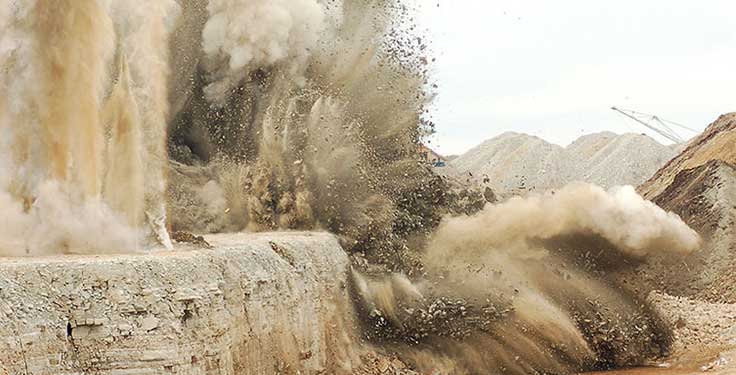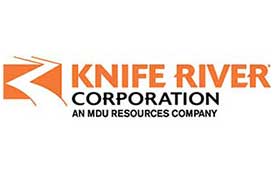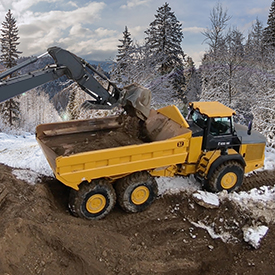You previously wrote in Pit & Quarry about blasting’s history – how it’s a very long one spanning multiple centuries. You noted that some of the most significant changes in blasting happened more ‘of late.’ And that additional developments – including enhancements in automation – are sure to come.
The automation in drilling and blasting is an incredibly interesting topic, especially today. The new technologies we’re seeing are just going to start to turn the tide toward making that a reality.
Today, we already have things like autonomous drilling systems. These drills have certain markers on where they’re supposed to drill. You don’t need an operator in the cab, you don’t need an operator on the bench. They’re already moving to the place, identifying where they’re at and drilling the hole exactly as you’ve designed it from, say, an office space.
The big thing is going to be: Can we ever get to autonomous explosive loading? When you think about it, you’d think things like emulsions and ANFOs could already be autonomously loaded. You’re just going up to a hole, identifying it and putting in something to that hole – whether it’s an emulsion or an ANFO. That’s a fairly straightforward process. There’s not too much more complexity there than the drilling process.
But the big key today is it’s almost impossible to have robotics that are accurate enough to go find all the lead lines, from the detonators inside the bulk hole, properly hooking all of those up, and then going back to a place further away to not be damaged during that blast. That’s really where that hang-up is right now – it’s in that connection of the lead lines.
I think what we’re going to see in the future is drones coming out that fully model a bench face. That will be sent to an engineer sitting in an office who will design a blast. The data will be sent to a drilling system, and an autonomous drill will drill each and every one of these boreholes. The drone will then fly back over and get within millimeter accuracy the location of each of those boreholes. It can then upload that to a blast loading platform, which is also autonomous.
And here’s the big key for this: We need to get rid of the wires in the blasthole. So, how do we do that? Well, we’ve already started to see some of these products coming out with 100 percent wireless detonators. So, now it will be as simple as having a machine – an autonomous loading system – putting a detonator into a borehole that’s wireless, pump or auger in explosives on top of that detonator, and then leave the site.
The stemming is probably already something we can do with some of the autonomous loaders or remote-control loading systems. That’s not too difficult to find, either.
Now, you’ve completely loaded an entire blast. It’s sitting there, and an engineer from an office can send out a signal, program all of those wireless detonators, the ‘all clear’ can be called – or, in the future of mining where everything is autonomous, all of the equipment will leave the mine site – and the engineer can fire the blast. We’ve not completely autonomously drilled and loaded that shot.
This is a very specific vision for what drilling and blasting operations are going to look like. Will we see this in our lifetimes?
I think we’re at least 15 or 20 years away from that – if not more. I hope to see it somewhere in my lifetime, but it will depend a lot on the available innovation. I think the biggest component of that is it will depend on what happens in other sectors.
The blasting portion of mining is one of the most dangerous aspects. We must have a lot of safety precautions in place. That’s where having a blaster on the ground really [offers] huge benefits over an autonomous loading system. It’s that they can monitor what’s happening and they can ensure the safety of the entire mine site – not only for themselves, but for all of the other employees, equipment and the nearby public.
I think for an autonomous blasting system what’s really going to be the key is how fast will mines adopt automation in all of the other areas – loading, hauling [and] all of those other parameters that we’re looking at.
I think at some point it will happen but at what point? I can’t put a date on that.
Featured photo: iStock.com/koer
FIVE THINGS
FAVORITE QUOTE – “”The only thing necessary for the triumph of evil is that good men do nothing” – Winston Churchill
FIRST INDUSTRY JOB – Mining engineering intern at Fairmount Minerals’ Best Sand quarry in Chardon, Ohio
TRAVEL – Puerto Rico. If you want to enjoy 80- to 85-degree weather year-round and almost every ecological system, that’s your place.
HOBBIES – Hunting. Waterfowl is my favorite, but I do it across the board.
SPORTS – Cleveland Browns












